![]()
![]()
![]()
Use LEFT and RIGHT arrow keys to navigate between flashcards;
Use UP and DOWN arrow keys to flip the card;
H to show hint;
A reads text to speech;
18 Cards in this Set
- Front
- Back
|
How did the moon form?
|

The moon formed about 4.5 billion years ago as a result of a collision between earth and a planet-sized object.
|
|
|
What factors affect the length of the rays formed after an impact?
|
The harder the metorite hit or the bigger the meteorite, the farther the material in the rays would go.
|
|
|
What is a meteoroid?
|
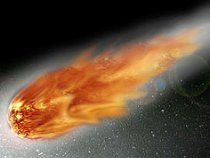
a celestial body that can range in size from a speck to an object weighing thousands of kilograms
|
|
|
What are the layers of the moon? What are their characteristics?
|

the layers are crust (far side and near side)mantle, core. the crust is not as dense as the earth. the core is iron, far side crust is about 150 km thick, and the near side crust is about 65 km thick
|
|
|
What are maria? How are they formed?
|

people thought that they were basins filled with water up on the moon but they are really basins filled with water. it doesn't say how they're formed.
|
|
|
What are mascons? How are they formed?
|
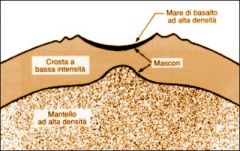
mascons are ares of higher gravity. it doesn't say how they formed.
|
|
|
What are rilles? How are they formed?
|

rilles are a distinctive feature in maria bedrock. they were formed when a river of molten lava flowed along the surface.
|
|
|
Where are craters located and how are they formed?
|

craters are on the moon. it doesn't say how they are formed.
|
|
|
What are rays? How are they formed?
|
rays consist of shattered rock and dust that were splashed out by the meteoroids that formed the craters.
|
|
|
Describe regolith.
|
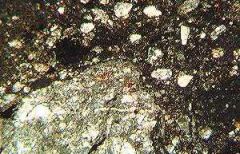
it is lunar soil, that is not really soil. it is a grayish mixture of small rock pieces and fine particles that range in size from sand grains to fine dust.
|
|
|
Why does the moon rise at a different time each day or night?
|
The moon moves 13 degrees east every day. It takes the earth an extra 50 minutes to go 13 degrees to catch up to the moon's new position so the moon rises and sets 50 minutes later each day.
|
|
|
What is the difference between a partial and total lunar eclipse?
|
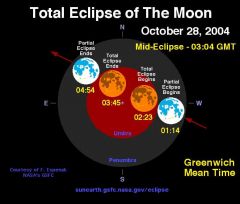
A total lunar eclipse is when the moon is completely in the earth's umbra. A partial lunar eclipse is when the moon is only partially in the earth's umbra.
|
|
|
What is the difference between an annular and total solar eclipse?
|
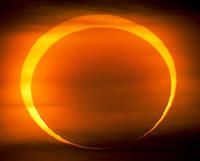
The moon is closer to the sun and farther from the earth during the annular eclipse. The effect is that the earth is lighter because the moon's umbra doesn't reach all the way to the earth. The moon's disk is slightly smaller than the sun and looks like it has an orange ring around it
|
|
|
What are the phases of the moon?
|

new moon
waxing crescent first quarter waxing gibbous full moon waning gibbous last quarter waxing crescent |
|
|
What is the daughter theory?
|
The still molten earth dripped off a piece that formed the moon as it spun rapidly. It would have the same composition as earth and would be slightly younger than earth.
|
|
|
What is sister theory?
|
The moon formed at the same time as the earth from the same material, gases and dust as the earth. It would be the same age as the earth (check this?) and would have the same composition as the earth (check?)
|
|
|
What is the capture theory?
|
The moon formed elsewhere in the solar system, and passed close enough to earth's gravitational field to be pulled into its orbit. It can be any age or composition.
|
|
|
Impact theory
|
During the final stages of earth's formation, a thin crust and an iron (Fe) rich core, the earth was struck by a huge meteorite. Hot gases and debris splashed into space. The debris spun around the earth and gradually formed the moon.
|

